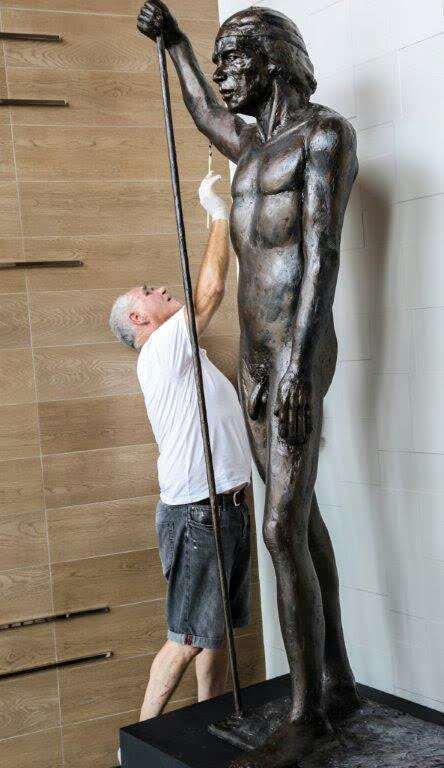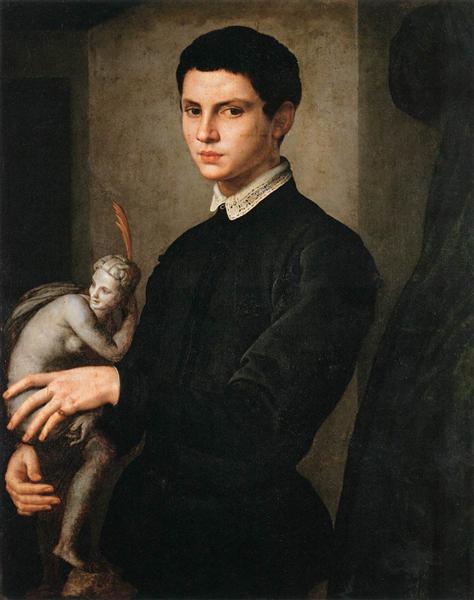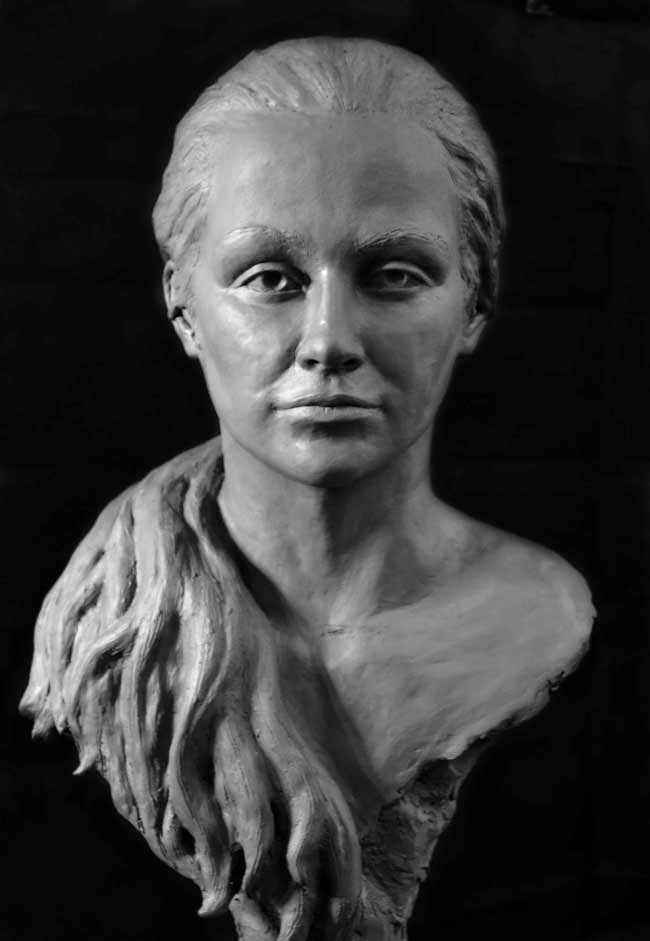The Advancement of Sculptures: From Old to Modern
The Development of Sculptures: From Old to Modern. Robert C Hitchcock Sculptor.
Sculpture, one of the oldest types of art, has actually been an important component of human world for centuries. From the ancient human beings of Egypt and Greece to the modern age, sculptures have actually developed, mirroring changes in creative methods, products, and social influences. This trip with time traces the development of sculptures, discovering the shifts stylishly, topic, and creative expression.
Starting with the old globe, sculptures crafted from stone and later bronze recorded the essence of deities, rulers, and day-to-day life. The Renaissance period saw a rebirth of classical sculpting techniques, as musicians sought to emulate the stylish types of old Greek and Roman sculptures (Robert C Hitchcock Sculptor). In the contemporary era, artists tested typical boundaries, welcoming abstraction and testing with new products
This exploration will explore the diverse advancement of sculptures, exposing the abundant tapestry of imaginative expression across different periods and cultures.

Old Sculptures: From Stone to Bronze
Ancient sculptures transitioned from being sculpted out of rock to being cast in bronze. Stone sculptures, while outstanding in their very own right, were restricted by the nature of the product. Contemporary Sculptures.
The introduction of bronze as a medium for sculptures brought about a transformation in imaginative expression. Bronze supplied carvers the possibility to produce lifelike and complex types that were not feasible with rock. The procedure of casting bronze permitted for the creation of numerous duplicates of a sculpture, allowing bigger distribution and conservation of these imaginative work of arts.
The shift from rock to bronze likewise saw a shift in the subject of sculptures. While stone sculptures mainly illustrated gods, goddesses, and mythological numbers, bronze sculptures began to reflect a broader variety of topics, consisting of everyday people and animals. This development of subject showcased the versatility and adaptability of the bronze medium.
Renaissance Resurgence: Forming in the Timeless Style
The Renaissance revival of sculpture experienced a revival in the classical design, structure upon the innovations made throughout the transition from stone to bronze in old sculptures. Throughout this period, musicians looked for to recreate the timeless visual and suitables of charm that were prevalent in old Greek and Roman sculptures.
One of the vital characteristics of the Renaissance rebirth was the emphasis on naturalism and the human kind. Carvers like Donatello and Michelangelo strove to catch the anatomical details and expressions of their topics with unprecedented accuracy. They examined the human body and integrated their monitorings into their sculptures, causing sensible and realistic depictions.
One more vital element of the Renaissance rebirth was the expedition of point of view and deepness. Artists made use of techniques such as contrapposto, where the weight of the body is shifted to one side, producing a sense of motion and dynamism. They additionally explore different products, including marble and bronze, to accomplish a level of sophistication and complexity in their sculptures.

Innovation and the Avant-Garde: Damaging Conventional Borders
Throughout the Modernism and Avant-Garde activities, sculptors pressed the borders of conventional imaginative conventions. This period, which emerged in the late 19th and early 20th centuries, saw a significant shift in the way artists came close to sculpture. Turning down the idea of art as mere imitation, modernist artists looked for to check out new forms, products, and principles.
Among the essential attributes of modernist sculpture was the focus on abstraction. Sculptors moved far from practical depictions and instead concentrated on capturing the essence of the subject with streamlined types and geometric forms. This separation from traditional representation enabled musicians to share their emotions and ideas in a much more subjective and individual fashion.

Contemporary Sculptures: Discovering New Materials and Concepts
With a concentrate on exploring new materials and principles, contemporary sculptures have transformed the field of art. Artists today are pressing the borders of traditional sculpture by utilizing ingenious products and exploring with abstract ideas. These sculptures challenge traditional notions of materiality, definition, and form, welcoming visitors to take part in a provocative and new creative experience.
Contemporary sculptors are embracing a wide variety of products, consisting of plastic, glass, metal, and even natural issue. They are not restricted to the standard medium of stone or clay, enabling higher civil liberty and trial and error. This change towards non-traditional materials has actually opened up new possibilities for artists to create sculptures that are vibrant, interactive, and visually striking.
Along with discovering brand-new materials, modern sculptures likewise look into facility and abstract ideas. important site Artists are currently exploring motifs such as identification, social issues, and the environment, making use of sculpture as a powerful tool for social commentary and self-questioning. These sculptures challenge customers to think critically and engage with art on a much deeper level, triggering conversations and prompting emotional reactions.
International Influences: Sculptural Practices From All Over The World
Sculptural practices from different regions of the globe have dramatically shaped the advancement of sculptures throughout history. The international influences on sculpture have actually varied and have actually contributed to the splendor and variety of creative expressions. From the ancient worlds of Egypt, Greece, and Rome to the detailed carvings of Eastern societies, each region has actually developed its special sculptural practices that have affected artists throughout time.
In ancient Egypt, sculptures were produced largely for religious and funerary objectives. The legendary sculptures of gods and pharaohs, such as the Great Sphinx and the breast of Queen Nefertiti, showcase the Egyptians' mastery of rock sculpting and their idea in the immortality.
In ancient Rome, sculpture served both political and imaginative functions. Roman sculptures typically shown emperors, generals, and mythological figures, showing the power and majesty of the empire. The marble statue of Augustus of Prima Porta and the significant Arc of Constantine are remarkable examples of Roman sculptural achievements.
Oriental sculptural customs, especially in India, China, and Japan, have also had a profound impact on the evolution of sculptures. Japanese sculptures, influenced by Buddhism, emphasize simpleness and peace, seen in the peaceful sculptures of Buddha and the stylish art of bonsai.
The worldwide influences on sculpture proceed to advance in the modern age. Musicians today attract ideas from different sculptural customs, incorporating new materials, strategies, and principles to produce provocative and ingenious artworks. The blend of various cultural impacts has actually triggered a diverse and dynamic sculptural landscape, showing the interconnectedness of our global society. As we aim to the future, it is specific that the global impacts on sculpture will remain to form and redefine this old art kind.
Verdict
To conclude, the development of sculptures has actually seen a shift from ancient rock and bronze works to the timeless resurgence throughout the Renaissance. This was complied with by the splitting of conventional boundaries via modernism and the progressive movement. Today, contemporary sculptures discover new products and concepts, while additionally drawing motivation from global sculptural practices. The journey of sculptures shows the ever-changing artistic expressions and cultural impacts throughout background.
From the old human beings of Egypt and Greece to the modern age, sculptures have evolved, showing modifications in imaginative techniques, materials, and cultural influences.Beginning with the old globe, sculptures crafted from rock and later on bronze captured the essence of divine beings, rulers, and everyday life.Ancient sculptures transitioned from being carved out of stone to being cast in bronze. While rock sculptures mostly portrayed gods, sirens, and mythical numbers, bronze sculptures started to show a wider variety of topics, consisting of day-to-day individuals and animals.In conclusion, the advancement of sculptures has seen a shift from old stone and bronze functions to the timeless resurgence during the Renaissance.